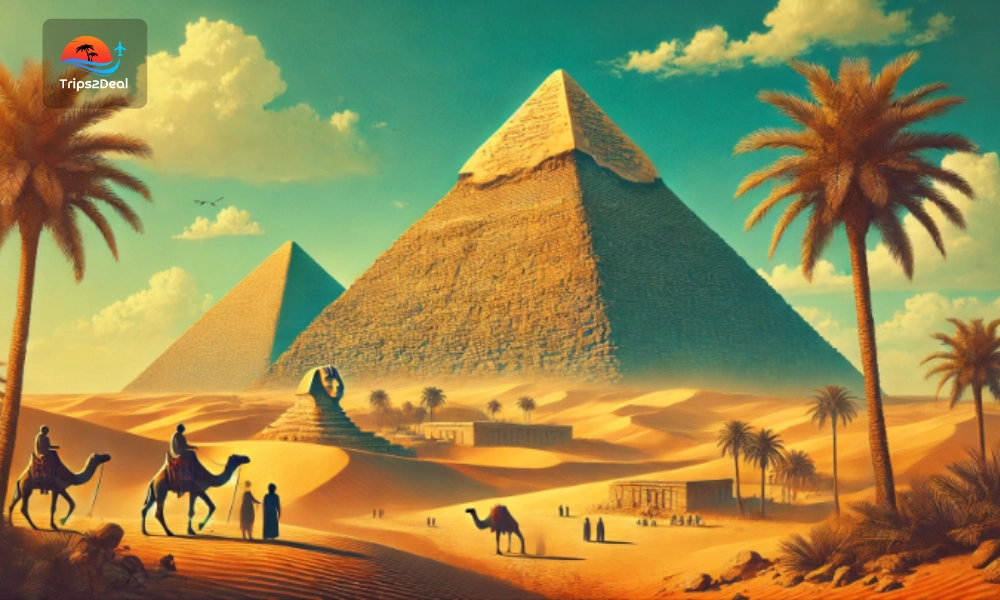Blogs

Chephren ( Khafre )
Khafre (Greek: Chephren/Ξεφίρεν), was an ancient Egyptian king of the Fourth Dynasty of the Old Kingdom (the c. 2558 to 2532 BC period). Perhaps best known as the builder of the Second Pyramid of Giza, he is also closely associated with the Great Sphinx of Giza, the world's most famous monument. On the whole, though less well-known than his father (Pharaoh Khufu, builder of the Great Pyramid), Chephren's time was distinguished by architectural achievements and religious and cultural contributions to Egypt.
Table of Contents
Who Was King Chephren?
Chephren was the son of King Khufu (the builder of the Great Pyramid), and he inherited the throne from his father. His reign was shorter than his father's but was very important for the development of the pyramid in the Old Kingdom of Egypt.
The name Chephren is derived from his ancient Egyptian name of Khafre: “he who appears” or “the shining one” – very much the marketing figure of its time. Like many of his fellow pharaohs, Chephren adopted divine qualities, representing himself as the living god on the planet and protector of the Egyptian people. His reign came during a golden age of pyramid building, helping to solidify Egypt’s standing as one of the most powerful and technologically advanced societies of the ancient world.
The Second Pyramid of Giza
Chephren is best known for the Second Pyramid of Giza, which lies near the Great Pyramid of Khufu. The pyramid is a bit shorter than the Great Pyramid at Giza, but it seems taller because it is on higher-ground. When first constructed, the pyramid stood at 143.5 meters (471 feet) tall, but over the years most of its outer casing has been removed, leaving it an approximate height of 136 meters (446 feet).

The Second Pyramid has a special waiver of its own, much of its original smooth limestone casing remains at the very top, framing a view in the 21st century of how the Great Pyramids would have appeared on their inaugural finishes — shiny, smooth and bright in sunlight. The pyramid’s entrance is on the north side, which opens into a series of chambers intended to be the pharaoh’s tomb.
It consists of a mortuary temple (which at its NYP: closest example resembles the one at Giza), a causeway, and a valley temple. These monuments were built to pay tribute to the king, to assist in his posthumous worship, and to provide a safe passage to the afterlife. Chephren's pyramid is regarded as one of the largest of the Giza pyramids as well as a symbol of ancient Egypt's advanced engineering and architectural prowess.
The Great Sphinx of Giza
One of the other major accomplishments of Chephren's reign was the construction of the Great Sphinx of Giza, one of the most famous monuments in the world. A massive limestone statue with a lion's body and a pharaoh's head, probably representing the pharaoh Chephren himself, the Sphinx. However, its actual purpose is still debated, but is generally considered a symbol of the pharaoh's divine power and protection, serving as a guardian of the pyramid complex. The Sphinx is also thought to guard and protect the contents of the pyramids.
A special sun god at sunrise the Sphinx faces directly toward the rising sun, and its location between Chephren's pyramid and the valley temple suggests that the colossal creature might have served to physically protect the pharaoh's tomb and guarantee safe passage to him in the afterlife. Although it had undergone some natural erosion over many centuries, the Sphinx remains one of the most significant monuments in Egypt.

Chephren’s Legacy
Although not as long or well-recorded as his father’s tenure, Chephren’s was an important one, both in the context of developing the Giza pyramids complex, perhaps the world’s greatest archaeological site, and in the context of pharaonic architecture and art. Through his success Egypt remained a powerful civilization in the Old Kingdom, monumental architecture and religion continued to flourish.
Chephren’s visage was enshrined in statuary, most notably a granite statue of him seated, which was unearthed in the Valley Temple of his pyramid complex. It depicts the king as young and virile, with a countenance of strength and masterfulness. This statue, coupled with his pyramids and the Sphinx, developed his role in Egypt’s place in history as one of the true great monarchs of the ancient world.
Conclusion
King Chephren (Khafre) was essential in the building of the Giza pyramids and the formation of the Great Sphinx, both of which continue to be among Egypt’s most lasting symbols. Chephren’s reign is engraved in history as one of the climactic periods of ancient Egyptian faith, his architectural accomplishments, and the legacy of his monuments ensure it. Although he is generally overshadowed by his more famous father (Khufu), Chephren's contributions helped to cement Egypt's majesty during the Old Kingdom, with much of his work continuing to amaze the world today.





